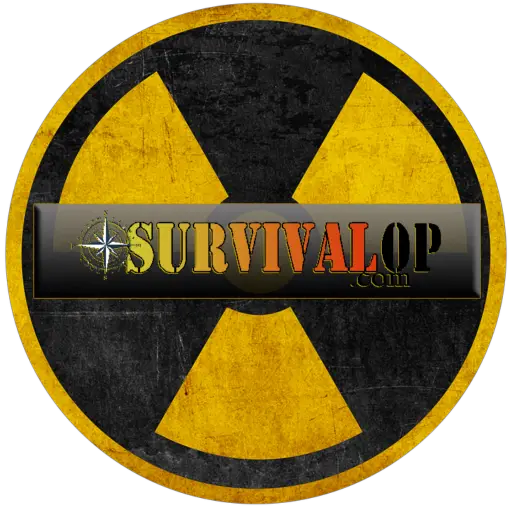When it comes to survival in an emergency situation, preparation is key. Having a personal survival plan is one of the most important steps you can take to ensure that you and your family are safe and secure when disaster strikes. In this post, we’ll discuss the benefits of having a personal survival plan and how you can go about creating one.
Knowledge is Power
Having a personal survival plan is the best way to be prepared for any emergency situation. It gives you the knowledge and confidence to know how to react and how to keep yourself and your family safe.
A personal survival plan should include detailed information on what to do in the event of a natural disaster, a terrorist attack, or any other type of emergency. This can include information on where to go for safety, what supplies to bring, and what to do if you are separated from your family.
Having this knowledge and planning ahead gives you a sense of control in a chaotic situation and can help reduce stress and anxiety. It also allows you to respond quickly and take the necessary steps to protect yourself and your loved ones.
Organization and Efficiency
Having a personal survival plan can help you stay organized and efficient in an emergency situation. When you have a plan in place, you know exactly what needs to be done and what supplies you need. This allows you to gather the necessary supplies quickly and efficiently so you can get to safety as soon as possible.
Having a plan also allows you to delegate tasks to other family members so everyone can pitch in and help. This allows you to move quickly and stay organized, which can be key to surviving in a chaotic situation.
Peace of Mind
Having a personal survival plan can also provide peace of mind in an uncertain situation. Knowing that you are prepared for any emergency can help reduce stress and anxiety, allowing you to focus on what needs to be done to stay safe. It can also give you a sense of control in a chaotic situation, allowing you to take the necessary steps to protect yourself and your loved ones.
Having a plan in place can also give you the confidence to make the right decisions in a difficult situation. Knowing that you are prepared and have a plan in place can give you the courage to make the right decisions in an uncertain situation.
Check out, What Emergency Food Lasts the Longest?
Create Your Plan
Creating a personal survival plan is an important step in ensuring that you and your family are safe and secure in an emergency situation. It can provide you with the knowledge and confidence to respond quickly and efficiently in a chaotic situation. It can also provide peace of mind and the courage to make the right decisions in a difficult situation.
Creating a personal survival plan can seem overwhelming, but it doesn’t have to be. Start by gathering information about the types of emergencies you may face.
Research the necessary supplies and equipment you need and make a list. Put together a plan of action for each type of emergency and practice it with your family. By taking the time to create a plan, you can ensure that you and your loved ones are prepared and ready to face any emergency.
You may be interested in, Finding the Best Water Filtration System for Your Home 2023 Guide
Here are some general steps you can take to create a survival plan:
- Identify potential risks: The first step is to assess the potential risks that you may face in your area, such as natural disasters like hurricanes, earthquakes, or floods, or man-made disasters like power outages or civil unrest.
- Create a communication plan: Make a plan to stay in touch with family members, friends, or other people who are part of your support network during an emergency. This may include establishing a meeting place or using technology to communicate.
- Assemble an emergency kit: Gather essential items that will sustain you and your family for at least 72 hours, such as non-perishable food, water, first aid supplies, and other emergency supplies like flashlights and blankets.
- Develop an evacuation plan: Determine how you will evacuate if necessary, including potential evacuation routes and transportation options.
- Stay informed: Stay informed of updates and changes in the situation, whether it is through local news or emergency alert systems.
- Practice your plan: Once you have developed your survival plan, it is important to practice it with your family or support network. This can help you identify potential weaknesses in your plan and make necessary adjustments.
Remember that every situation is unique, so it is important to tailor your plan to fit your specific needs and circumstances. Stay flexible and be willing to adjust your plan as needed to ensure the safety and well-being of yourself and your loved ones.
Conclusion
Having a personal survival plan is one of the most important steps you can take to ensure that you and your family are safe and secure in an emergency situation. Having a plan in place gives you the knowledge and confidence to respond quickly and efficiently, as well as the peace of mind to make the right decisions in a difficult situation.
Taking the time to create a plan can ensure that you and your loved ones are prepared and ready to face any emergency.
If you haven’t already, now is the time to create a personal survival plan. Start by researching the types of emergencies you may face and the necessary supplies and equipment you need. Then, put together a plan of action for each type of emergency and practice it with your family. By taking the time to create a plan, you can ensure that you and your loved ones are prepared for any emergency.


